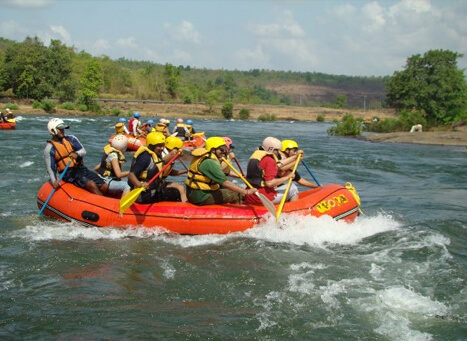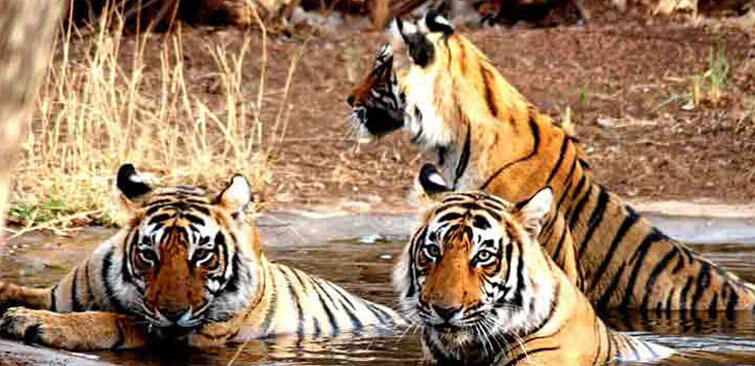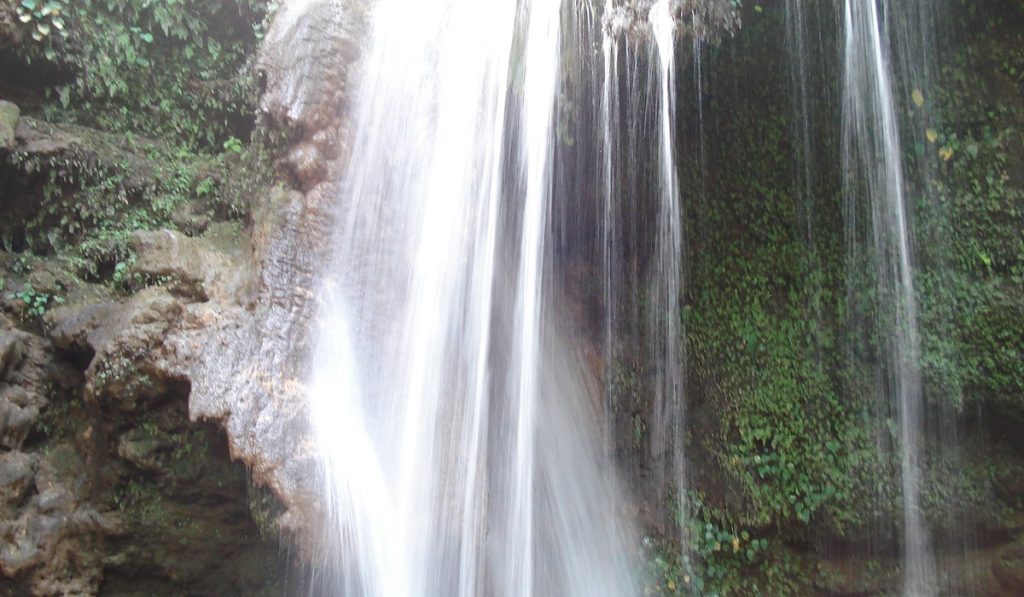India is a land of vibrant cultures and rich history. Exploring this diverse country is an adventure like no other.
Traveling in India offers a unique mix of experiences. From bustling cities to serene landscapes, there’s something for everyone. Each region has its own charm, traditions, and attractions. Whether you’re a history buff, nature lover, or foodie, India has it all.
The country’s vast geography ranges from the majestic Himalayas in the north to the tropical beaches in the south. With its deep cultural heritage and modern cities, India presents a fascinating blend of the old and new. Understanding the basics of travel in India will help you make the most of your journey. Let’s dive into what you need to know for an unforgettable trip.
Introduction To Traveling In India
Traveling in India offers a blend of rich history, vibrant culture, and diverse landscapes. From the Himalayan peaks to the beaches of Goa, every corner of India has something unique. Let’s dive into the basics of traveling in this fascinating country.
Why Visit India?
India is a land of contrasts and surprises. The country is home to many ancient monuments, bustling markets, and serene temples. You can experience different cuisines, languages, and traditions as you travel from one state to another. India’s diverse natural beauty includes lush forests, arid deserts, and picturesque backwaters. Each destination offers a unique experience and unforgettable memories.
Popular Destinations
India boasts many popular destinations that attract tourists from around the world. The Taj Mahal in Agra is a must-see. This iconic monument symbolizes love and architectural brilliance. Jaipur, known as the Pink City, offers stunning palaces and vibrant markets. Kerala, with its tranquil backwaters and lush landscapes, is perfect for a relaxing getaway.
For spiritual seekers, Varanasi provides a deep dive into Indian spirituality along the banks of the Ganges. The beaches of Goa are ideal for those seeking sun and fun. The hill stations like Shimla and Manali in the north offer breathtaking views and cool climates. Each place in India tells a different story and adds to the traveler’s experience.
Planning Your Trip
Planning your trip to India can be exciting. It’s a country full of diverse cultures, stunning landscapes, and vibrant cities. To make the most of your visit, it’s essential to plan ahead. This section will guide you through the basics. From choosing the best time to visit to crafting the perfect itinerary, we’ve got you covered.
Best Time To Visit
India’s weather varies across regions. The best time to visit is usually from October to March. During these months, temperatures are cooler and more pleasant. Avoid the summer months of April to June, as it can get extremely hot. Monsoon season, from July to September, brings heavy rains.
Northern India, including places like Delhi and Agra, is best in winter. Southern India, like Kerala and Goa, enjoys a tropical climate year-round. Plan your trip based on the regions you want to explore.
Choosing Your Itinerary
India is vast and offers countless attractions. Start by deciding what interests you the most. Historical sites, like the Taj Mahal and forts in Rajasthan, are must-sees. For nature lovers, the Himalayas and Kerala’s backwaters are stunning. Cultural enthusiasts will enjoy cities like Varanasi and festivals across the country.
Consider the duration of your stay. A short trip might focus on one region. A longer vacation allows you to explore multiple areas. Research travel distances and transportation options. Flights, trains, and buses are available, but travel times can be lengthy.
It’s wise to mix popular tourist spots with lesser-known gems. This approach provides a richer experience. Always remember to balance your itinerary with some relaxation time.
Travel Documents And Visas
Planning a trip to India? Fantastic choice! It’s a land of vibrant colors, rich history, and incredible diversity. But before you pack your bags, make sure you have all the necessary travel documents and visas sorted out. Let’s dive into what you need to know about visa requirements and other essential travel documents to enjoy a hassle-free journey to India.
Visa Requirements
Getting a visa for India is a straightforward process, but it does require some preparation. Here’s what you need to know:
- Types of Visas: India offers several types of visas, including tourist, business, student, and medical visas. Choose the one that fits your purpose of visit.
- e-Visa: For short-term stays, you can apply for an e-Visa online. It’s quick and convenient, and you can get it for tourism, business, or medical purposes.
- Validity: Tourist visas typically last up to six months, but e-Visas are usually valid for 60 days. Make sure to check the validity period before you apply.
- Documents Needed: You will need a passport-sized photograph, a copy of your passport, and sometimes proof of travel plans (like flight tickets).
Pro tip: Always double-check the latest visa requirements on the official Indian government website as rules can change!
Passport And Other Essentials
Your passport is the key to entering India, but there are other important documents to keep handy:
- Passport: Ensure your passport is valid for at least six months from your date of entry. This is a standard requirement for most countries.
- Photocopies: Keep photocopies of your passport, visa, and other important documents. It’s useful in case you lose the originals.
- Travel Insurance: This isn’t a document, but having travel insurance can save you from unexpected mishaps. Trust me, it’s worth it!
- Emergency Contacts: Have a list of emergency contacts, including the local embassy or consulate. Better safe than sorry!
Oh, and here’s a little anecdote – I once forgot to carry a photocopy of my visa and had quite the adventure explaining my situation to the local authorities. Lesson learned: always be prepared!
With these documents in hand, you’re all set to explore the wonders of India. Safe travels!
Health And Safety
Traveling in India can be an exciting adventure. But, ensuring your health and safety is essential. Understanding the basic health and safety measures can make your trip enjoyable and worry-free.
Vaccinations
Before traveling to India, check for recommended vaccinations. Common vaccines include Hepatitis A and B. Typhoid and Tetanus shots are also important. Consult with your healthcare provider about other necessary vaccines. Getting vaccinated can prevent many travel-related illnesses.
Staying Safe
Stay alert to your surroundings to ensure safety. Avoid isolated areas, especially at night. Keep your belongings secure and close to you. Use registered taxis and reputable transport services. Drink only bottled or purified water. Be cautious about street food. Stick to busy and well-lit areas. Follow local laws and customs. This approach can help you stay safe during your travels.
Cultural Etiquette
Understanding cultural etiquette is essential when traveling in India. The diverse culture has its own set of norms. Respecting these can enhance your experience and help you connect with locals. Let’s delve into some key aspects of cultural etiquette in India.
Dress Code
In India, modest clothing is appreciated. Covering your shoulders and knees shows respect. For women, long skirts or pants are preferred. Men should avoid wearing shorts in temples and rural areas.
Comfortable, loose-fitting clothes are also practical due to the climate. Traditional Indian attire can be a good choice. It shows respect for the local culture. Avoid wearing tight or revealing clothes to avoid unwanted attention.
Local Customs
Indians place a high value on politeness. Use “Namaste” as a greeting. It’s a respectful and traditional way to say hello. Remove your shoes before entering homes and places of worship.
Offering and receiving items with your right hand is important. The left hand is considered unclean. Avoid public displays of affection. They are not common in Indian society and can be frowned upon.
Respecting religious customs is crucial. Follow the rules in temples, mosques, and other holy places. Silence and humility are appreciated in these environments. Always ask for permission before taking photos of people or religious sites.
Transportation Options
Traveling in India can be a fascinating and colorful experience, but understanding your transportation options is essential for a smooth journey. Whether you’re weaving through bustling cities or exploring remote villages, knowing how to get from point A to B will save you time, money, and stress. Let’s dive into the basics of travel in India, focusing on public transport and domestic flights.
Public Transport
Public transport in India is a lifeline for millions and offers an authentic glimpse into the daily life of locals. Here are some key options:
- Buses: State-run and private buses connect cities, towns, and even the most isolated areas. They’re economical and frequent but can be crowded and less comfortable.
- Trains: Indian Railways is one of the largest rail networks in the world. Trains are a great way to travel long distances at a reasonable cost. Booking in advance is crucial, especially for popular routes.
- Auto-rickshaws: These three-wheeled vehicles are perfect for short distances within cities. Negotiate the fare before starting your journey, as meters are often ignored.
- Metro: Major cities like Delhi, Mumbai, and Bangalore have modern metro systems. They are clean, efficient, and a great way to beat traffic.
While using public transport, always keep an eye on your belongings and be prepared for some amount of chaos – it’s all part of the adventure!
Domestic Flights
Given India’s vast size, flying can be the most time-efficient way to travel between distant cities. Here’s what you need to know:
- Airlines: India has a range of budget and full-service airlines. IndiGo, SpiceJet, and Air India are some popular ones. Booking tickets in advance can fetch you good deals.
- Airports: Major cities have well-equipped airports with amenities like Wi-Fi, lounges, and food courts. Smaller cities may have basic facilities but are improving rapidly.
- Check-In: Arrive at the airport at least two hours before domestic flights. Online check-in can save time and help you avoid long queues.
- Baggage: Budget airlines often have stricter baggage policies. Make sure your luggage meets the weight and size requirements to avoid extra fees.
Flying in India is generally safe and efficient. Plus, you get to see the country’s breathtaking landscapes from above – a true added bonus!
So, whether you’re hopping on a bustling local bus or soaring above the clouds, India’s diverse transportation options ensure that your adventure is as seamless as it is memorable.
Accommodation Choices
Traveling in India offers a wide range of accommodation choices. From luxury hotels to budget hostels, there is something for everyone. This guide will help you understand the different options available.
Hotels And Hostels
Hotels in India range from budget to luxury. Budget hotels offer basic amenities at affordable prices. Luxury hotels provide world-class services and facilities. Major cities like Delhi, Mumbai, and Bangalore have many options. Smaller towns also have good choices.
Hostels are great for budget travelers. They offer dormitory-style rooms and shared spaces. Hostels are perfect for meeting other travelers. Many hostels provide free Wi-Fi and breakfast. Popular tourist areas have many hostels. Booking in advance is recommended, especially during peak seasons.
Alternative Stays
Alternative stays offer unique experiences. Guesthouses and homestays are popular choices. These options provide a more personal touch. Staying with a local family gives insight into their culture and lifestyle. Guesthouses often include home-cooked meals.
Another option is eco-lodges. These are great for nature lovers. Eco-lodges focus on sustainability and eco-friendly practices. They are usually located in scenic areas. This type of stay offers a peaceful environment. Perfect for those looking to disconnect and relax.

Credit: www.youtube.com
Food And Dining
India is a country that tantalizes all your senses, and its food is no exception. The vast variety of flavors, spices, and dishes can be overwhelming for first-time visitors, but trust me, it’s a journey worth taking. Let’s dive into the culinary wonders of India, where every meal is an adventure.
Must-try Dishes
When in India, you must try some of the iconic dishes that define its rich culinary heritage. Here are a few that you shouldn’t miss:
- Butter Chicken: A creamy, tomato-based curry that’s rich and flavorful. Perfect with naan bread.
- Samosa: Fried or baked pastry filled with spiced potatoes, peas, and sometimes meat. A popular snack.
- Masala Dosa: A crispy, rice crepe filled with a spicy potato mixture. Often served with coconut chutney and sambar.
- Rogan Josh: A fragrant lamb curry from Kashmir, cooked with yogurt and a blend of spices.
- Biryani: A mixed rice dish with meat or vegetables, flavored with saffron and garnished with fried onions and boiled eggs.
Street Food Safety
Street food in India is legendary, but it’s important to stay safe while indulging. Here’s how to enjoy street food without any worries:
- Choose Busy Stalls: Opt for stalls with long lines. High turnover means fresh food.
- Watch How It’s Made: Observe the hygiene practices. Are they using fresh ingredients? Is the cooking area clean?
- Go for Cooked Food: Prefer items that are cooked in front of you. This minimizes the risk of contamination.
- Avoid Raw Foods: Steer clear of raw salads or foods that have been sitting out for a while.
- Stay Hydrated: Drink bottled water and avoid ice unless you’re sure it’s made from purified water.
Remember, part of the charm of India is its street food. With a little caution, you can savor these culinary delights without any concerns. Bon appétit!
Shopping Tips
Shopping in India is an adventure you don’t want to miss! From bustling local markets to high-end stores, there’s something for everyone. But, it can be a bit overwhelming if you don’t know where to start. So, let’s dive into some essential tips to make your shopping experience in India smooth and enjoyable.
Local Markets
India is famous for its vibrant local markets. Every city has its own unique markets brimming with colorful stalls and a variety of goods. Whether you’re in Delhi, Mumbai, or Jaipur, you’re sure to find something that catches your eye. Here are some things you should know:
- Variety: Local markets offer everything from clothes and jewelry to spices and handicrafts. It’s a treasure trove for those who love unique finds.
- Authenticity: These markets are the best places to buy authentic Indian goods. You can find handmade items that you won’t get anywhere else.
- Experience: Walking through these markets is an experience in itself. The sights, sounds, and smells are something you’ll remember forever.
One of my favorite markets is the Chandni Chowk in Delhi. The narrow lanes are packed with shops selling everything from spices to silver jewelry. It’s a sensory overload, but in the best way possible!
Bargaining Techniques
Bargaining is a common practice in Indian markets. Don’t be shy about it; it’s part of the culture! Here are some tips to help you haggle like a pro:
- Start Low: Always start by offering a price lower than what you’re willing to pay. This gives you room to negotiate.
- Be Polite: Bargaining doesn’t mean being rude. Always be polite and respectful. A smile can go a long way!
- Know the Market: Do a quick walk around to see what other vendors are offering. This gives you an idea of the fair price.
- Walk Away: If the seller doesn’t agree to your price, don’t hesitate to walk away. Often, they will call you back and agree to your price.
Once in Jaipur, I was eyeing a beautiful scarf. The vendor quoted a price that seemed too high. I started lower, and after some back and forth, we settled on a price that was fair for both of us. It was a win-win!
Remember, shopping in India is not just about buying things; it’s about the experience. So, enjoy every moment and happy shopping!

Credit: gomedii.com

Credit: shop.roughguides.com
Frequently Asked Questions
What Is Needed When Travelling To India?
You need a valid passport and visa to travel to India. Carry health insurance, local currency, and necessary medications.
How To Start Traveling In India?
Begin by obtaining a valid visa. Plan your itinerary carefully. Book accommodations in advance. Choose reliable transportation. Stay aware of local customs and safety guidelines.
How To Prepare Your Stomach For A Trip To India?
Start by eating probiotic-rich foods to strengthen your gut. Avoid spicy and oily foods before your trip. Drink bottled or purified water. Carry oral rehydration salts and medications for stomach issues. Gradually introduce local cuisine to your diet.
What Is The Best Way To Travel Around India?
The best way to travel around India is by train for an authentic experience. Domestic flights are ideal for long distances. Rent a car or bike for flexibility and adventure. Use buses for budget travel.
Conclusion
India offers diverse travel experiences. From bustling cities to serene landscapes. Every traveler finds something unique. Enjoy rich culture and heritage. Explore historical monuments and vibrant festivals. Taste flavorful local cuisine. Remember, respect local customs and traditions. Plan ahead for a smooth journey.
Make memories that last a lifetime. India awaits your visit. Safe travels!




